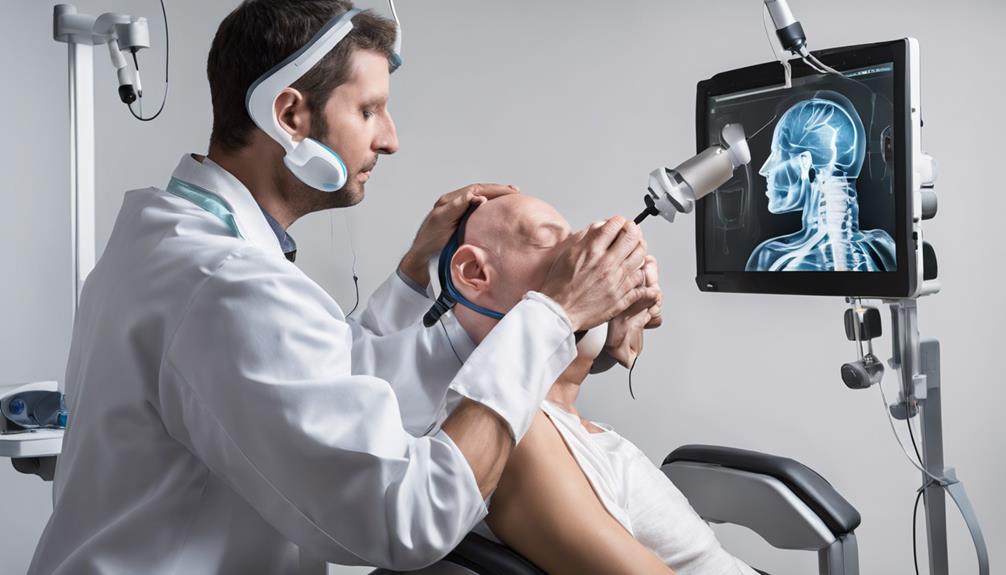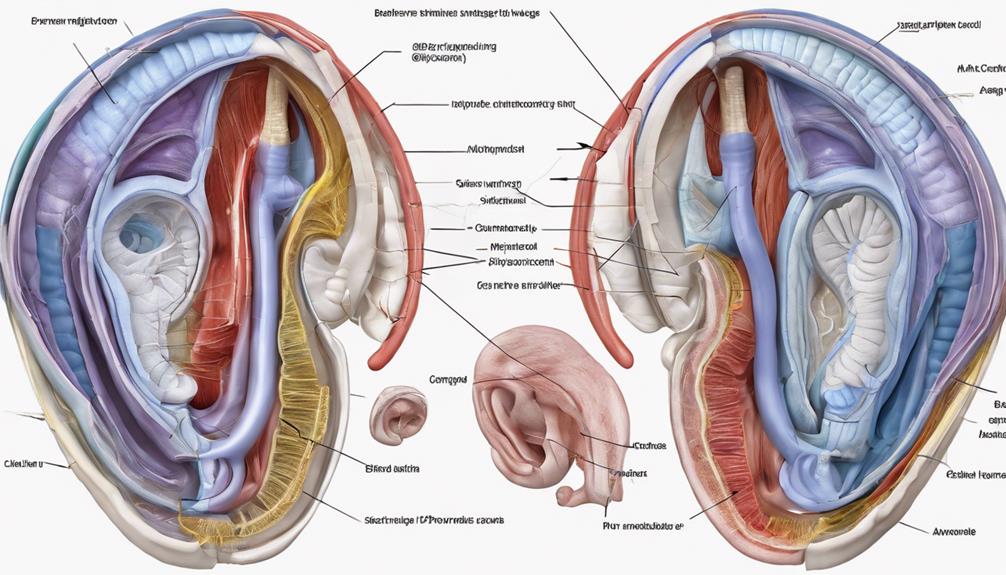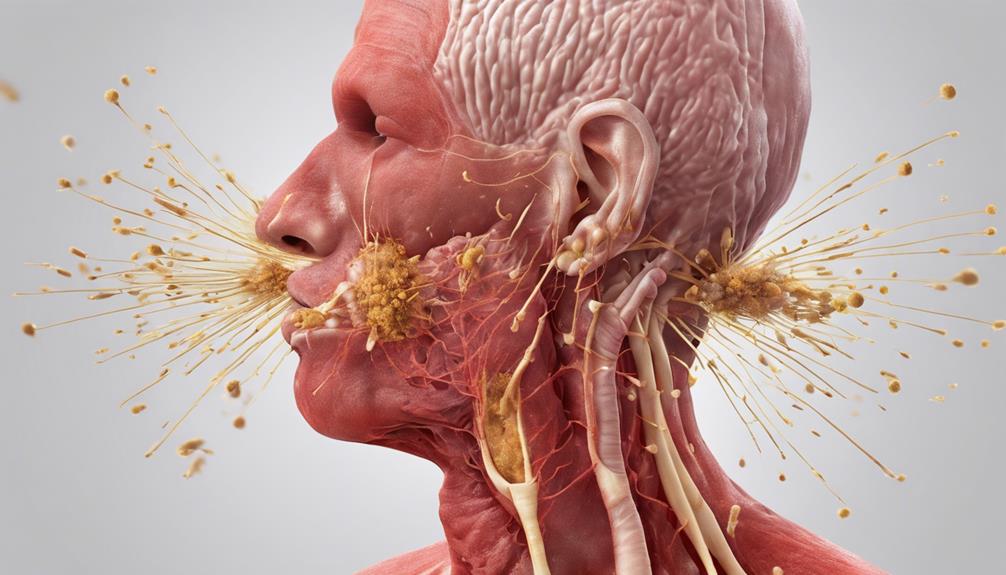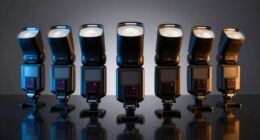Upon investigating how Benign Paroxysmal Positional Vertigo (BPPV) could result in hearing loss, we uncover a complex web of connections that go beyond surface level.
With symptoms that can intertwine and impact our auditory system, the link between BPPV and hearing impairment raises intriguing questions.
As we journey through the various facets of this relationship, we'll uncover not only the mechanisms at play but also the potential implications for treatment strategies.
Let's navigate this intricate terrain together, shedding light on the comprehensive guide that unveils the mysteries of BPPV-induced hearing loss.
Key Takeaways
- Displaced otoconia in BPPV disrupt fluid flow, impacting hearing.
- BPPV in SSNHL cases can signal severe labyrinth damage.
- Addressing vestibular and auditory aspects is vital for treatment success.
- Vestibular testing and age factors are crucial in planning BPPV-related hearing interventions.
Understanding Benign Paroxysmal Positional Vertigo
What causes the sudden episodes of vertigo in Benign Paroxysmal Positional Vertigo (BPPV)?
BPPV is primarily triggered by displaced otoconia, which are tiny calcium carbonate crystals located in the inner ear, specifically within the semicircular canals. These displaced crystals disrupt the normal flow of fluid in the inner ear, leading to erroneous signals being sent to the brain about head movement and position.
As a result, when certain head movements occur, such as rolling over in bed or tilting the head back, these displaced otoconia move within the semicircular canals, causing a sensation of spinning or dizziness known as vertigo.
Understanding the connection between these displaced particles in the inner ear and the sudden episodes of vertigo in BPPV is essential for accurate diagnosis and effective treatment. By pinpointing the root cause of vertigo in BPPV, healthcare providers can implement targeted canalith repositioning procedures like the Epley maneuver to reposition the otoconia, restoring proper fluid dynamics in the inner ear and alleviating the symptoms of vertigo for individuals suffering from this condition.
Impact of BPPV on Auditory System

The presence of BPPV in patients with sudden sensorineural hearing loss (SSNHL) significantly impacts their likelihood of experiencing profound hearing loss. Factors such as age, canal paresis, and pre-treatment hearing levels, along with BPPV, play a crucial role in determining the outcomes of hearing in SSNHL cases. Studies have indicated that BPPV might signal severe labyrinth damage, leading to poorer hearing recovery among SSNHL patients. Considering vestibular testing findings becomes imperative in predicting the hearing prognosis due to the impact of BPPV on auditory system function. Addressing both vestibular and auditory aspects in management strategies is crucial as BPPV can negatively influence hearing outcomes in SSNHL patients.
| Factors | Impact on Hearing Outcomes in SSNHL Patients |
|---|---|
| Age | Influences likelihood of profound hearing loss |
| Canal Paresis | Significant role in determining hearing outcomes |
| Pre-treatment Levels | Affects the recovery of hearing abilities |
Symptoms of BPPV-Related Hearing Loss
Experiencing sudden sensorineural hearing loss accompanied by vertigo and imbalance could indicate symptoms of BPPV-related hearing issues. Individuals with BPPV-related hearing loss may notice a sudden onset of hearing impairment along with feelings of dizziness, spinning sensations, and unsteadiness. These symptoms are often exacerbated by specific head movements and changes in body position, making everyday activities challenging. In some cases, patients may also experience nystagmus, characterized by rapid and involuntary eye movements that accompany the vertigo episodes.
The correlation between sudden sensorineural hearing loss and vertigo in BPPV suggests a more profound impact on the inner ear's labyrinthine structures, potentially affecting both hearing and balance functions. Recognizing these symptoms promptly is crucial for seeking appropriate medical intervention to address the underlying BPPV-related hearing issues. By understanding the manifestations of BPPV-related hearing loss, individuals can take proactive steps towards managing their condition effectively and improving their quality of life.
Causes of Hearing Impairment in BPPV

Sudden sensorineural hearing loss accompanied by vertigo and imbalance in BPPV patients can be attributed to various causes, including severe labyrinth damage affecting cochlear and auditory function. Inner ear membrane breaks or biochemical alterations associated with BPPV may contribute to diminished initial hearing levels.
When BPPV occurs alongside sudden sensorineural hearing loss (SSNHL), profound hearing loss and decreased treatment responsiveness can result. The presence of BPPV in SSNHL cases significantly influences prognosis and overall hearing outcomes.
Recognizing the connection between BPPV and hearing loss emphasizes the importance of considering vestibular function tests and age-related factors during treatment planning. Evaluating inner ear structures and function through vestibular assessments can provide valuable insights into the extent of damage and aid in tailoring interventions.
Treatment Options for BPPV-Induced Hearing Loss

Considering the multifaceted nature of BPPV-induced hearing loss, treatment options encompass a range of interventions tailored to address both vestibular and auditory concerns. At our Medical Center, we prioritize comprehensive care to effectively manage BPPV-induced hearing loss. Here are some key treatment options to address this condition:
- Vestibular Rehabilitation Exercises: These exercises target inner ear balance issues, helping to improve vestibular function and potentially enhance hearing outcomes.
- Canalith Repositioning Procedures: Maneuvers like the Epley or Semont maneuver can alleviate BPPV symptoms, leading to potential improvements in hearing function.
- Medications: Vestibular suppressants or antiemetics may be prescribed to manage vertigo symptoms, indirectly impacting hearing outcomes.
- Surgical Interventions: In severe or refractory cases affecting hearing, procedures like posterior semicircular canal occlusion may be considered.
- Collaborative Care: Otolaryngologists, audiologists, and vestibular specialists work together to tailor treatment plans, ensuring optimal management of BPPV-induced hearing loss.
Frequently Asked Questions
How Does BPPV Cause Hearing Loss?
BPPV can impact hearing by indicating severe labyrinth damage in SSNHL cases. It may lead to poorer initial hearing levels and limited hearing improvement. Factors like age, pre-treatment hearing levels, and canal paresis influence how BPPV affects hearing outcomes.
Vertigo in SSNHL patients with BPPV could be tied to biochemical changes or inner ear membrane breaks impacting hearing. Understanding this impact is vital for predicting SSNHL prognosis and guiding treatment decisions.
Can Vertigo Make You Lose Your Hearing?
Yes, vertigo can indeed lead to hearing loss. When experiencing vertigo, the inner ear's delicate balance can be disturbed, affecting hearing function. This disruption can result in a loss of hearing ability, impacting overall auditory health.
It's essential to address vertigo promptly to minimize potential complications like hearing loss and ensure optimal well-being.
How Many Times Can I Do the Half Somersault Maneuver?
We can perform the Half Somersault Maneuver up to three times in a row, with brief rests between each repetition.
It's essential to follow proper instructions and consult a healthcare provider for guidance on the frequency and technique of the maneuver.
Repeating the maneuver as needed can help reposition displaced otoconia in the inner ear and alleviate vertigo symptoms.
Consistency and correct execution are key to the maneuver's effectiveness.
What Are the Symptoms of Chronic Bppv?
Chronic BPPV symptoms, like recurrent vertigo, dizziness, and balance issues, can be debilitating. Nausea and vomiting may accompany vertigo attacks, impacting daily life.
Unsteadiness and balance difficulties persist, affecting normal activities. These ongoing symptoms greatly reduce our quality of life and functioning.
Despite treatments, chronic BPPV leads to long-lasting or recurring vertigo spells.
Conclusion
As we unravel the intricate connection between BPPV and hearing loss, one thing becomes clear – the impact of BPPV on auditory function isn't to be underestimated.
The symptoms, causes, and treatment options all point to a complex relationship that demands further exploration.
Stay tuned for more insights into how BPPV can cause hearing loss, as we continue to uncover the mysteries surrounding these interconnected conditions.











